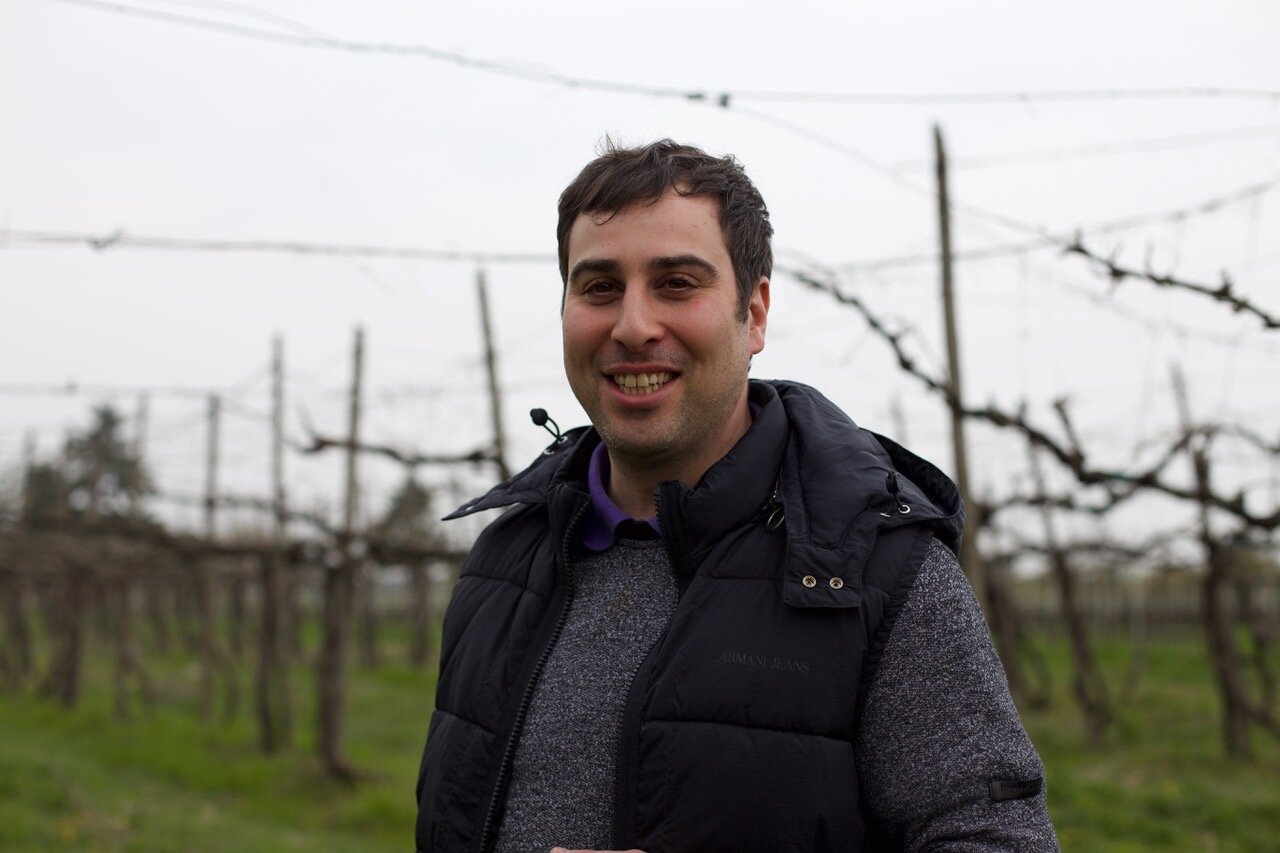Zanasi
about zanasi:
"A good drinker of Lambrusco is not only a proud, warm and generous man, but he is above all free. Therefore what is it, if it isn't Lambrusco that gives the Parmesan people that bright, sincere and dominant air; that sparkle in their eyes, that loud voice and tough expression? It is the wine of freedom and of the free man."
- Curzio Malaparte, Lambrusco and Freedom
What is good wine for? The point of good wine is to be delicious, and to make food taste good. So these two Lambruscos from Marco Uccellari at Zanasi are perfect wines; they are delicious, and they make all kinds of food taste good, from pizza to some of the famous specialties from around Modena, where they are made, such as Prosciutto di Parma. Or ‘gnoccho fritto,’ or indeed slices of Parma ham laid over hot gnoccho fritto so they kind of melt together. Or fresh pasta with ragù Bolognese and a sprinkling of Parmesan cheese (also local). Once you try any of these combinations you wonder why other places haven’t tried to make sparkling red wines like this, fruity yet savory; it’s so good, why isn’t everyone doing it?
Zanasi is a small estate, about 55 acres of vineyards, just south of Modena. Some of the vines are cultivated organically (and are so certified), others by Integrated Pest Management*; yields are low, in order to ensure good concentration of aroma and flavor. Winemaking is relatively straightforward: ‘We work the wine as little as possible, in order to preserve the color and the fruit perfume that the grapes give us.’
_____________________________________________
the wines:
Lambrusco Grasparossa di Castelvetro
Made entirely of the Grasparossa (red-stemmed) variety of Lambrusco, grown using Integrated Pest Management* in two vineyards just south of Modena, planted between 1964 and 2002. This variety of Lambrusco grown in these soils gives the chewiest, deepest, darkest Lambrusco wine. The soils are limestone-based clay; the altitude is about 100 meters (330 feet) above sea level; yields are kept very low in order to concentrate the aromas and flavors. The grapes are normally picked in early October; after about 5-6 days of maceration on the skins at low temperature without fermentation the grapes are pressed, and fermented in special tanks from juice to sparkling wine in a single fermentation using indigenous yeasts. After several months on the lees in tank the wine is filtered and bottled. (Marco notes that extracting color by macerating at cold temperature like this extracts only the ‘first, most noble’ layers of flavor in the skins, avoiding the bitterness that would come if fermentation started with the skins.)
Marco says ‘Intense fresh young aromas and flavors of red fruits: cherry, raspberry, blueberry.’ Chewy on the palate, very different wine from the Sorbara, and much darker in color, deep purplish red with pink foam around the glass. Excellent with salumi, pizza, pasta with meat sauce, the hint of bitterness on the finish cuts right through rich flavors.
Note that we import this wine in regular shipments as soon as it’s fermented, and try to sell it within six months of the fermentation. Wines made by this method are much better when drunk fresh.
Lambrusco di Sorbara
This variety of Lambrusco is distinguished by relatively pale pinkish red color, and an appetizing aroma and flavor of red berries and violets (Ian d’Agata says that it’s sometimes called Lambrusco di Viola for this reason; check his excellent book for information about the different varieties of Lambrusco). This example is made entirely of Lambrusco di Sorbara, grown just north of Modena; the vines were planted in 2005. The altitude is less than 100 feet above sea level; the soil is a mixture of sand and clay. The grapes are normally picked in mid-September, pressed immediately, then fermented all the way from juice to sparkling wine in a single fermentation, using native yeasts; this takes about a month, at low temperature. (Special reinforced tanks are used, to withstand the pressure of the CO2.) After several months on the lees, the wine is filtered (but not fined) and bottled, with a small amount of residual sulfites. Less than 2,000 cases are made annually.
This Lambrusco is bright pink in color with red and violet glints, with abundant bubbles when freshly poured, and extremely appetizing to look at. Marco describes it as ‘Young and fresh, with aromas and flavors of strawberry, violets, and rosemary.’ A hint of bitterness balances the fruitiness on the palate, making this irresistibly drinkable and excellent with a wide range of dishes, including pizza, fresh pasta with ragù Bolognese, and all kinds of salumi. I bet this would make amazing spritzes, too.
Note that we import this wine in regular shipments as it’s fermented, and try to sell it within six months of the fermentation. Wines made by this method are much better when drunk fresh.





